
Chrysalis crew members clean trash off the street and sidewalks along Alvarado Street, across from MacArthur Park in Los Angeles, on April 18, 2025. (Photo by Jules Hotz for CalMatters)
On a recent morning, Terry Bates approached a chain-link fence across from MacArthur Park as the Los Angeles neighborhood slowly came to life. His crew, Team 21, was responsible for cleaning the sidewalk and curb line along Alvarado Street, between Wilshire Boulevard and 6th Street.
Bates unlocked a padlock that tied two fences together, erected in January to keep out illegal vendors. Several workers, all employed by Chrysalis, a nonprofit under contract with the city, followed him inside.
They scooped up trash, scraped up debris and swept up patches of vomit. Everything went into bags. Fifteen minutes later, the stretch of muck had given way to a clean sidewalk. Team 21 moved on.
Bates, who grew up nearby and has been servicing the park since early this year, snapped a picture of the sidewalk before his team arrived, and another after they finished.
“That’s our work,” he said. “Every day.”
Back from the curb, away from the street, merchants opened up their shops, nodding appreciatively to the clean sidewalk in front.
“The businesses,” Bates noted, “love us for sure.”
This is civic reclamation in action. It is painstaking rather than revolutionary, methodical rather than abrupt.
And it is a test of at least two important questions: Can Los Angeles, by devoting time and attention to the long-suffering area around historic MacArthur Park, actually make a difference for those who live and work there, those who have despaired as the park has become a magnet for drugs, gangs and crime? And, perhaps more importantly, even if the city can effect that change, can it make it last?
Chrysalis, an organization that employs people who are or have recently experienced homelessness, is 1 of 10 nonprofits working to resuscitate the park and surrounding neighborhoods. Under contracts with the city and county, these groups are cleaning streets, intervening during drug overdoses, calming gang tensions and treating wounds, among other things.
Together, they represent a kind of strike force, swarming the community with assistance on the theory that reviving the area starts with stabilizing it after a long descent.
Nonprofits tasked with healing the park
MacArthur Park once was a source of civic pride in Los Angeles, home to fancy hotels and swanky residences. Its playgrounds were full. Its bandshell was a desirable place to gather for musical performances. But that was a long time ago.
In recent years, the park has slid from attraction to nuisance. By last year, the park was home to scores of unhoused people, and its periphery had become a bustling market for drugs, available to anyone with the desire to approach a street vendor and put up cash for meth or opioids. Drugs and desperation drew the interest of gangs, which used the park to fence stolen goods and sell drugs. Violent crime followed. Neighbors and businesses cowered in fear or fled the area.
It was the crime that drew the city’s attention, and in early 2025, the city leadership sent in the Los Angeles Police Department. Foot patrols are seemingly constant. Police cars regularly stop at entrances, as officers fan out to check for drugs or other illicit activity. Serious crimes — homicides, assaults, robberies — have fallen as the police have made their presence known.
But a neighborhood is more than the sum of its crimes. And law enforcement can only do so much to construct and sustain community life.
That’s where the nonprofits come in.
Led by City Councilmember Eunisses Hernandez, local community groups have been tapped to handle many of the park’s most critical needs. Homies Unidos and Healing Urban Barrios connect with gangs in the area, easing tensions when there is violence or the threat of it. The L.A. Care MacArthur Park Care Collaborative and Field Medicine Program provides so-called wraparound care to the homeless people in the area. An overdose response team from Homeless Health Care Los Angeles roams the park during the day looking for signs of people experiencing a drug crisis.
Opioids are what rivets their attention. When meth users take too much, they get frantic and can be alarming. When the drug is an opioid, however, the user can quietly slump away, breath ebbing, heart slowing, until they simply die. The mobile units are attuned to the sight of slumping bodies and have intervened in some 60 cases since launching late last year.
“The work these groups are doing on the ground is part of a bigger movement we’re leading to end the cycle of neglect and disinvestment at MacArthur Park,” said Naomi Villagomez Roochnik, deputy director of communications for the council member. “Since 2023, we’ve brought over $25 million in new funding into the park and the Westlake neighborhood.”
Life in the park reflects the combined efforts of all these organizations. Men and women in yellow vests snap up trash and pick their way through pockets of older men lolling under the influence and younger men keeping an eye out for the police.
The groups keep eyes on each other, and residents thread their way through them. One morning last week, a father walked his son to a bus stop, the boy holding on tight to his dad’s hand as they picked through the morning rush. The boy smiled at the Chrysalis team, which waved back. Nearby, a young woman with threadbare clothes and a face smudged with dirt slowly wheeled through an intersection in her wheelchair.
Jessica L., who declined to share her last name, said she’d been living on the streets near the park for about three months, since her husband died of a heart attack and she could no longer afford her rent. A native of New York, she said incidents in the park were common but were under better control in recent weeks.
“They keep it pretty neat,” she said of the cleanup crews.
It’s a difficult job, and there have been unwelcome surprises. When police initially swarmed to disrupt the illegal vending, it drove down violent crime but also produced a brief uptick in overdoses. Buyers were forced to find new dealers, and the new batches of drugs were sometimes of different potencies.
“Substance supply wasn’t consistent,” said Aurora Morales, associate director of community initiatives for Homeless Health Care L.A.
As the effort unfolds, many people involved are learning as they go.
For the neighborhood, this influx of help is a welcome relief, visible in the greetings of store owners and parents walking children to the bus stop. But it’s not the ultimate measure of success.
Lasting change will come when the nonprofits and the police are not needed, at least at this intensity. It will be recognizable when the playgrounds return to life, when the streets are clean without fences, when Bates and Team 21 don’t need to arrive before shops open to make their rounds.
Until then, “we’re here every day,” Bates said. And we’re making progress. You can see,” he continued, pointing to the area his crew had just finished, “the guys do a really good job.”
He locked up the fence again, and the crew moved on.
This commentary is the second in a string of recurring coverage on L.A.’s attempts to restore MacArthur Park and areas like it, and the implications for distressed communities around the state.

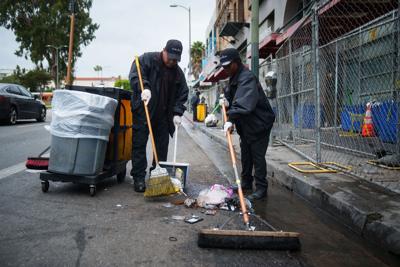
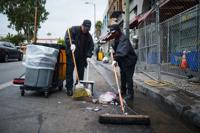

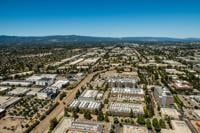

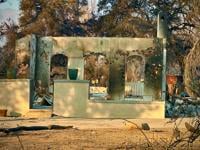

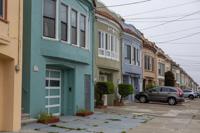

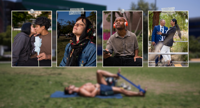
(0) comments
Welcome to the discussion.
Log In
Keep it Clean. Please avoid obscene, vulgar, lewd, racist or sexually-oriented language.
PLEASE TURN OFF YOUR CAPS LOCK.
Don't Threaten. Threats of harming another person will not be tolerated.
Be Truthful. Don't knowingly lie about anyone or anything.
Be Nice. No racism, sexism or any sort of -ism that is degrading to another person.
Be Proactive. Use the 'Report' link on each comment to let us know of abusive posts.
Share with Us. We'd love to hear eyewitness accounts, the history behind an article.